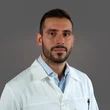This is how our application simplifies the booking and administration process. Interested >>
Surgery for spinal deformities
A spinal deformity is progressive in nature, so surgery is inevitable in many cases. Being aware of this, we try to perform the intervention in time, which is feasible with better outcomes this way, even in patients who have milder symptoms.
The spine is the central axis of our organ of support, the skeleton. It has to meet multiple demands, which are partially controversial:
- It has to keep the trunk with the head on it stable in a way, that it is also capable of axial “springing”, and of moving to every direction of the space, even with a limited amount.
- Meanwhile, it has to protect the spinal cord and the roots of the spinal nerves.
Vertical posture is an unstable balance position, which depends on multiple factors. Its basic evolutionary benefit is that we can look forward from high up. In this position, the head is positioned above the area of support, which is bordered by our feet.
When a person is standing, it takes the least amount of energy to keep the head in balance when the spine is also in a balanced position i.e., its curves balance out each other by keeping the line of gravity within the area of support.
By looking at the spine from the front (this is called the frontal plane), it is almost completely straight with a mild right curvature at the location of the heart, while by looking at it from the side (this is referred to as the “sagittal” plane in the scientific literature), it has its typical curvatures, which eventually balance out each other. If we look at the spine from above (transversal plane), the vertebrae turn to one direction with their spinous processes looking backward.
The equilibrium position of the spine is called balance, and it is defined from the side (sagittal plane) and the front (frontal plane). A healthy spine is almost completely straight when looking at it from the front. If a downward vertical line is drawn from any of its central elements on an X ray image which was taken in standing (usually it is the 7th cervical vertebra), then it will cross the sacrum in the middle, which is the middle component of the pelvis. Defining the equilibrium position is a lot harder by looking at it from the side due to the physiological curvatures of the spine. Insomuch that there is not even a method which is accepted by everyone, and this proves that none of the approaches are perfect. Still, taking the analogy of the frontal plane as basis, if a downward vertical line is drawn from the center of the 7th cervical vertebra and it crosses the upper surface of the sacrum, then it can be concluded that the balance is not greatly disturbed.
A spinal deformity means morphological changes, which exceed the physiological limits in any of the previously described planes. Spinal curvatures which become visible by looking at them from the front are called scoliosis. It is important to distinguish the deformities which present in young or old age. In young age, the causes of the deformities are not known in the majority of the cases, while in a smaller portion, congenital disorders, muscle, and nerve diseases lead to them. These deformities often present already in early childhood, and they tend to deteriorate to an even life threatening degree, in which case, surgical treatment is inevitable. One part of the deformities in adulthood is the result of childhood deformities which were detected only later, but another part of them could develop due to the degeneration of the spine, and these typically do not aggravate, or at least not quickly. The combination of these may also occur. Out of the deformities, which could be noticed from the side, the most prominent is the increased curvature of the thoracic spine (gibbosity). This could be a partial phenomenon of scoliosis in young age, when the deformity presents in all three planes, but in some of its forms, the curvature is only increased in one plane. However, it occurs more often as a consequence of the changes in the spine’s shape, which come with the aging of the spine, and the weakening of discs and vertebrae. Usually, the deformity in adulthood is accompanied by losing the balance position of the spine, which means that more and more muscular effort will be needed to keep the trunk and head properly during standing and walking, and this leads to muscle fatigue and the associated pain.
We have the option for conservative treatment i.e., non surgical treatment meaning that targeted exercises are used to strengthen the supporting musculature of the spine, if necessary, a brace could be also used to support the spine which puts the load off of the muscles, but in this case, the concurrent weakening of the unused muscles should be considered. If the deformity cannot be treated, then eventually it may be also a solution to use aids (walking aid, cane) for support, so that the load can be put off of the painful musculature, which is not strong enough to support the spine.
The surgical treatment of the deformities is usually a complex intervention, and it is consistent with the spinal structure. In this process, we try to estimate the optimal curvatures for the given patient by comparing the data measured on the spines of healthy and unhealthy individuals. If the spine still has some mobility, then it will be used, but if the spine is stiff, then the desired shape will be created by “cutting” the vertebrae (it is called osteotomy). The fixation or the permanent fusion of multiple spinal segments is usually necessary for this.
If you have any questions, please send a letter to magankorhaz@bhc.hu!
















